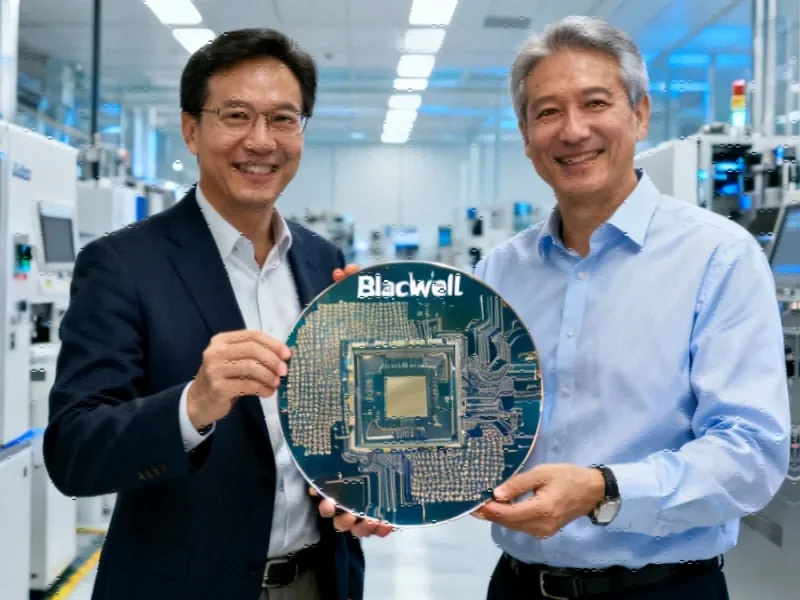Historic Shift in Global Semiconductor Manufacturing
In a landmark development for American technology sovereignty, NVIDIA CEO Jensen Huang has unveiled the first Blackwell chip wafer manufactured at TSMC’s Arizona facility. This achievement represents a significant milestone in the ongoing effort to reshore critical semiconductor production to United States soil, marking what industry analysts are calling the beginning of a new era in domestic chip manufacturing.
The successful production of NVIDIA’s cutting-edge Blackwell architecture on American soil comes amid broader geopolitical realignments in technology supply chains. “This is the very first time in recent American history that the single most important chip is being manufactured here in the United States by the most advanced fab,” Huang declared during his visit to Phoenix, emphasizing the strategic importance of this development.
The Arizona Semiconductor Corridor Takes Shape
TSMC Arizona’s rapid progression to Blackwell wafer production—achieved in just six months from April’s initial announcement—demonstrates the foundry’s commitment to establishing robust manufacturing capabilities in the United States. The facility’s ability to meet aggressive timelines while maintaining TSMC’s legendary quality standards underscores why the Taiwan-based giant remains the world’s premier semiconductor manufacturer.
Ray Chuang, CEO of TSMC Arizona, celebrated the achievement alongside Huang, noting that the collaboration represents “the single most vital manufacturing industry and the most important technology industry in the world” now taking root in American soil. This manufacturing milestone is particularly significant given the complex global supply chain dynamics that have challenged semiconductor production in recent years.
Beyond Blackwell: The Roadmap to Advanced Nodes
Perhaps more impressive than the current achievement is TSMC’s committed roadmap for its Arizona operations. The company has revealed plans to introduce progressively advanced manufacturing processes, including two-, three-, and four-nanometer chips, with the revolutionary A16 (1.6nm) technology slated for future implementation. This forward-looking strategy positions the United States to remain at the forefront of semiconductor innovation for years to come.
The production of the Blackwell wafer represents just the initial stage in a complex manufacturing process that includes:
- Layering: Building up multiple material layers
- Patterning: Defining circuit structures through photolithography
- Etching: Selectively removing materials to create features
- Dicing: Separating individual chips from the wafer
These subsequent manufacturing stages will transform the Arizona-produced wafers into deployable AI chips that power next-generation computing applications across multiple sectors.
Strategic Implications for US Technology Leadership
NVIDIA’s commitment to American manufacturing extends beyond the TSMC partnership, with the company announcing plans to invest $500 billion in domestic production capabilities. This substantial investment has already prompted key suppliers including Foxconn and Quanta to establish manufacturing facilities in the United States, creating a virtuous cycle of technology ecosystem development.
The successful launch of Blackwell production in Arizona represents a tangible realization of the broader manufacturing renaissance that has been a policy priority across multiple administrations. As the global technology landscape evolves, this achievement demonstrates America’s capacity to reclaim leadership in critical manufacturing sectors while fostering innovation in emerging technological domains that will define the coming decades.
With TSMC’s advanced manufacturing processes now established in Arizona and NVIDIA’s commitment to domestic production, the United States is positioned to become a global semiconductor hub alongside traditional manufacturing centers, potentially reshaping global technology supply chains for generations to come.
This article aggregates information from publicly available sources. All trademarks and copyrights belong to their respective owners.
Note: Featured image is for illustrative purposes only and does not represent any specific product, service, or entity mentioned in this article.



